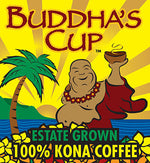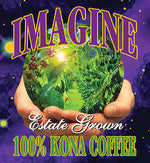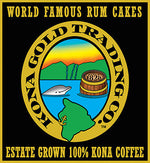Rich in taste and history, drinking tea has become a sacred practice around the world.
Today, the beverage is the second most consumed drink after water.
Tea has played a key role in cultural practices, rituals, medicinal development, and fueled geopolitical growth and tension.
Once thought of as a drink reserved for the upper class due to import costs, tea is now enjoyed by everyone.
Exploring the Global Tapestry of Tea Traditions
Since the onset of global trade, tea has shaped traditions and rituals across regions.
China: The Birthplace of Tea Culture

The exact origins of tea are a bit of a mystery.
Some sources claim the Chinese Emperor Shen Nong poisoned himself and used tea leaves as a cure, while others say the leaves drifted into Shen Nong’s boiling water, and he enjoyed the taste.
Regardless, tea drinking spread across ancient China, but it was mainly reserved for the upper class.
Eventually, tea became integrated into everyday life as the government encouraged everyone to drink it, leading to an expansion of tea culture in China, and the trading of tea across the world.
During Chinese tea ceremonies, different types of tea sets were used, including:
- Teapot and teacups
- Tea strainer
- Kettle
- Tea leaves
- Tray
- Tea leaf holder
Sources: Royal Museums Greenwich
Japan: Zen and the Art of Tea

Used mostly in Japanese tea ceremonies, matcha is a powdered green tea brought over from China. It does not need to be steeped, as the powder is whisked into hot water using a bamboo whisk.
Traditional Japanese tea ceremonies were for the wealthy and relied a lot on ancient Chinese traditions. The ceremony is held in an intimate tea room with an emphasis on the interaction between the hosts, guests, and tea utensils.
During the 16th century, Japanese tea ceremonies began to use rustic bowls and cups, appreciating their natural and imperfect forms, also known as the Wabi-Sabi aesthetic.
Today, tea drinking is a more casual event, and having the essential tea materials is no longer prioritized. However, tea rituals are still practiced and even performed for tourists.
Sources: Bon Appetit, The MET, Global Japanese Tea Association
India: From Chai Wallahs to Chai Masala

By way of the Silk Road and British Colonialism, tea made its way from China to India. Today, India is the second-largest tea-producing country.
In Hindi, one of India’s official languages, chai translates to tea, and chai is one of the most popular beverages, sold and drank everywhere.
Chai is made from four simple components:
- Black tea
- Milk
- Spices
- Sugar
Using Chinese tea plants, the British Empire established tea plantations in two Indian regions: Darjeeling and Assam.
In 1833, wild tea plants were discovered in Assam, a region known for heavy rainfall, rich soil, and high humidity. Assam teas are known for their rich, malty, full-bodied tastes.
Sources: Food & Wine, Oregon Undergraduate Research Journal
England: High Tea and Afternoon Delights

Tea arrived in Europe in the 17th century and quickly became a dietary staple.
Afternoon tea parties began in the Victorian era, due to later meal times as a result of industrialization. These parties were for royalty and wealthy people, requiring elegant decor and porcelain tea sets.
Over time, afternoon tea parties became more casual affairs. And it’s not a tea party without sandwiches, scones, clotted cream, and cakes.
Eventually, there was also a growing trend in tea gardens.
These gardens included entertainment spaces, including:
- Music and dancing rooms
- Game rooms
- Concert rooms
Sources: The British Museum
Morocco: Mint Tea and Maghrebi Hospitality

The traditional Moroccan tea is Moroccan mint tea. This tea starts with loose-leaf Chinese gunpowder green tea. Sugar and spearmint are added to the pot, steeped, poured into glasses, and then poured back into the teapot to stir.
Drinking tea is a highly sacred tradition and occurs at every time of day. Drinking three glasses at a time used to be traditional. The ceremony of pouring mint tea fosters respect and community, even among visitors.
Sources: The Washington Post, Epicure and Culture
Russia: Samovars and Siberian Chills

It started with China giving tea as a gift to the Russian Tsar. Since then, tea has become a common trade import.
Due to high prices, it was a luxury item until it evolved into a treat for everyone in the 18th century.
The Russian samovar is a teapot that brews tea as well as keeps it warm. A tube attached to the body of the samovar holds smoldering charcoal or wood, which keeps the water hot, while the concentrated tea brew sits on top in a small teapot.
In Russia, tea is considered a prized beverage, providing warmth during harsh winters. It is often served with sugar, honey, or jam.
The Impact of Tea Drinking Around the World!
From the community-building rituals in Northern Africa to the respectful traditions in Japan, tea drinking transcends borders, connecting people across continents in a shared appreciation for this beverage.
Not only can tea warm your soul, but it benefits your physical health too.
Learn more about the top benefits of drinking black tea.
Health Benefits and Cultural Significance
Tea is rich in health benefits.
From reducing inflammation, reducing appetite leading to weight loss, improving cognitive function, and relieving mental health struggles, tea is a wonderful supplement to add to your diet.
Aside from health benefits, drinking tea expands your cultural awareness, letting you discover rich traditions and experience diverse cultural connections.
Modern Trends and Innovations
Recently, tea tourism has grown. More people are traveling to tea-producing regions for plantation tours and tastings, as well as attending tea rituals and ceremonies.
These experiences allow for an appreciation of diverse tastes and cultural experiences.
Additionally, like every industry with a long history, tea technology is continuously evolving, with automated tea makers, kettle-steepers, and even precision-controlled temperature settings entering the picture.
Differences in Teas Around the World
Today, tea is a reflection of humanity's creativity, diversity, and interconnectedness. Whether sipped in a bustling metropolis or savored in the tranquility of nature, tea unites us.
Our Buddha’s Cup family produces High Mountain Grown 100% Kona Coffee and Tea on the Big Island of Hawaii. Find your perfect cup of tea.
FAQs
What are the origins of tea?
Although the history is a bit of a blur, tea is believed to have originated from China, at 2700 BCE. It was loved throughout the country, and eventually made its way around the world.
What are the Japanese tea traditions?
In Japan, matcha is widely consumed and used in traditional tea ceremonies. These ceremonies prioritized precision and used unique tea utensils like the bamboo matcha whisk.
What is the significance of tea parties in England?
Afternoon tea parties, popularized during the Victorian era, became a space for casual conversation between women and eventually different social classes.













